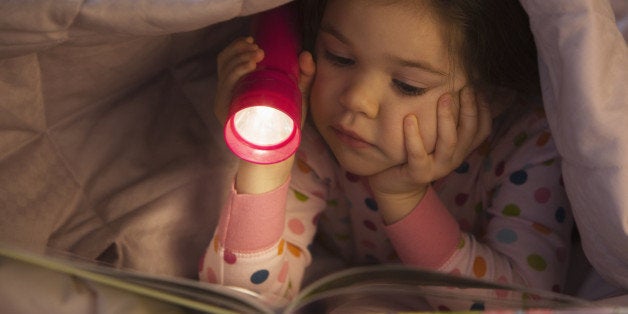
Alfonso, age four, had never willingly visited the library at his early-learning center. But one morning Alfonso's teacher had something new to show her class -- a brand-new collection of children's books about Latino culture and history. Later that day, instead of going to the playground during his free play period, Alfonso headed straight to the library, excitedly pointing out a book about the Mexican folktale La Llorona to his friends.
We know, and every study confirms, that strong reading skills are critical to a child's success in school, impacting everything from English class to their performance in math. But kids won't simply take to reading just because they're told to. They need a way in. For Alfonso, seeing a book about something familiar -- something that reflected his life experience -- was all it took to get him excited about reading.
From beloved children's author Walter Dean Myers' call for more diverse characters to the viral #WeNeedDiverseBooks campaign to the efforts of publishers like Lee & Low Books, the need for diversity in children's literature is getting plenty of attention. And to get our kids reading and to put them on track for educational success, we need to take action and deliver the books they need.
In the United States, the traditional market for book buyers has been the top 10 percent of the socioeconomic strata. Which means most authors, characters and stories that are published reflect the lives of affluent white families.
For decades, publishing insiders have argued that like it or not, this is what the market wants. Books about "other" kinds of children, "other" kinds of families and communities, they say, simply don't sell.
But they're wrong. Diverse books can and do sell. We've just been looking at the wrong market.
Last year First Book stepped up to the plate, making a commitment through the Clinton Global Initiative America to pioneer a market-driven solution to the lack of diversity in children's books. The absence of diverse characters and narratives is an industry problem that we see in our work providing new, high-quality books to children from low-income families. In recognition of America's rich tapestry, we're selecting books that highlight not only racial and ethnic diversity, but also the experiences of people with disabilities, and the stories of people with different religious beliefs, socioeconomic backgrounds, and sexual identities.
I have seen first-hand how America is growing in diversity. The Hispanic population of the U.S. stands at over 50 million, and experts expect that number to rise to nearly 129 million by 2060. As First Book's director of Hispanic engagement, I also know first-hand how important it is to increase the number of books that affirm these young people's lives. To that end, with the support of Disney and local teachers and community leaders across the country, First Book made a special effort to devote resources toward providing kids with stories focused on Latino culture and heritage.
Through our CGI commitment, which has put over 270,000 books about Latino culture into the hands of kids in need, we've learned some valuable lessons that we hope will inform the national conversation on children's literature.
- To become readers, kids need to see themselves in books. In a survey last year of more than 2,000 educators from First Book schools and programs, 90 percent of respondents indicated that the children in their programs would be more enthusiastic readers if they had access to books with characters, stories and images that reflect their lives and their communities.
We're taking these lessons to heart. As part of our ongoing Stories for All Project, we're demonstrating that there is a vibrant and growing market for a diverse range of authors, stories and characters reflecting who we are: Latinos, African-Americans, Native Americans, Asian and Pacific Islander Americans, LGBTQ families, those with special needs and more.
In the end, more diversity simply makes more sense: educators need better tools to reach students where they are; publishers need access to a new and valuable market; and children need a broad range of stories that truly reflect our multicultural world. Investing in diverse content is a strategy that creates the best narrative for all.
This post is part of a series produced by The Huffington Post and the Clinton Global Initiative in recognition of the latter's fourth meeting of CGI America (June 23-25, 2014, in Denver). CGI America convenes business, government, and civil society leaders each year to make commitments boosting the economic recovery and long-term competitiveness of the United States. For more information, click here.